39 country of origin meat labels
House Votes to Remove Country-of-Origin Labels on Meat Sold in U.S ... House Votes to Remove Country-of-Origin Labels on Meat Sold in U.S. Washington seeks to prevent a long battle over the labels with Canada and Mexico Country-of-origin labels were mandated by... H.R. 2393: Country of Origin Labeling Amendments Act of 2015 This was a vote to pass H.R. 2393 (114th) in the House. The Country of Origin Labeling Amendments Act of 2015 would repeal the requirement for meat products to be labeled with their country of origin. Currently meat products must include information on where the animal was bred, raised, and slaughtered. The Canadian government filed a complaint ...
Do You Know Where Your Meat Comes From? - EcoWatch Harris, who estimates at least 75 percent of the grassfed beef consumed in America comes from Australia, New Zealand or Uruguay, said American consumers are being intentionally misled. Millions of pounds of beef, imported from other countries, are being wrongly labeled as "Product of the USA," Harris said.
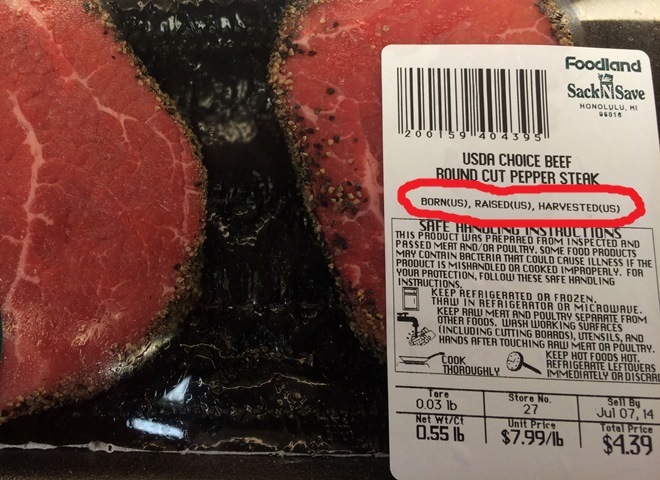
Country of origin meat labels
Country of Origin Labeling of Agricultural Products Country of Origin Labeling for Meat Products Meat from animals imported for immediate slaughter in the United States must be designated as "Product of Country X and the United States." Imported muscle cuts of meat for which no production steps occur in the United States retain the origin as declared to U.S. Customs and Border Protection. What is the country of origin labeling for imported beef? The mandatory country of origin labeling of imported meat and poultry requires that if imported meat or meat products are intended to be sold intact to a processor, wholesaler, food service institution, grocer, or the household consumer, the country of origin labeling is conveyed to those market segments and recipients. Country of Origin Labeling - Meat Institute Country of Origin Labeling COOL SUPPORT DESK 1. To find out if a specific product is a covered commodity or is labeled accurately, email cool@usda.gov . To subscribe to the USDA/AMS COOL listserv click here. 2. The Agricultural Marketing Service has extensive information online that gives an overview of COOL Final Rule Effective March 16, 2009
Country of origin meat labels. Did the U.S. Remove 'Country of Origin' Labeling from Meat? The repeal would not affect existing requirements for country-of-origin labeling for lamb, venison, goat meat, perishable agricultural commodities, peanuts, farm-raised and wild fish, ginseng,... USDA announces it will revisit country of origin labeling Under the proposed new rules, livestock that was not born in the United States could still be labeled as made in America. That would include meat derived from the millions of imported calves that are raised and fed in border states. This could be a sticking point for cattle breeders, known as cow-calf producers. House votes to repeal country of origin label requirement for meat Canada and Mexico have opposed the labeling because it causes their animals to be segregated from those of U.S. origin -- a costly process that has led some U.S. companies to stop buying exports.... Country of Origin Labeling for Meat Back on the Menu Other similar bills have been introduced in recent months, including the American Beef Labeling Act (S. 2716, introduced Sept. 13 by Sen. Thune, R-S.D.), which would require the Office of the U.S. Trade Representative to develop and implement within one year a WTO-compliant means of reinstating mandatory country of origin labeling for beef, and ...
PDF Country-of-Origin Labeling for Foods and the WTO Trade Dispute on Meat ... Country-of-Origin Labeling for Foods and the WTO Trade Dispute on Meat Labeling Congressional Research Service 1 Recent COOL Developments On May 18, 2015, the World Trade Organization's (WTO) Appellate Body confirmed the findings of previous panels that U.S. country-of-origin labeling (COOL) for beef and pork violated U.S. Meat Labeling Law Repeal Leaves Buyers in Dark About Product Origins After more than a decade of wrangling, Congress repealed a meat labeling law last month that required retailers to include the animal's country of origin on packages of pork and beef. It's a major... Country of Origin Labeling - Meat Institute Country of Origin Labeling DOES A MEAT PRODUCT NEED A LABEL? Work through this set of questions and you should be able to determine whether COOL applies to the products you make. A meat product from beef (including veal), pork, lamb, chicken, or goat must bear a COOL label or is subject to labeling providing COOL information if: Beef From Brazil and Canada Labeled as US Made: President of Cattlemen ... When the U.S. government tried to get labels requiring retailers to show the country of origin for the meat sold in the United States, ... repealed Country of Origin Labeling [COOL] in June 2015 ...
Country of Origin Labeling (COOL) Frequently Asked Questions The abbreviations "P.R. China" and "China" are acceptable for country of origin marking purposes for products originating from the People's Republic of China. Either "Netherlands" or "Holland" is an acceptable abbreviation for The Netherlands. Country of Origin Labeling Country of origin information, through signs, labels, etc., is required regarding certain fresh meat products, e.g. steaks, ground beef, and pork chops, as well as certain fresh chicken products that are sold in retail stores. Meat and chicken products sold in restaurants, as well as processed products, are exempt from the law. Food labelling: country of origin - GOV.UK If poultry, sheep, goat or swine meat is taken from animals born, reared and slaughtered in the same country, you can label it as 'Origin: [name of the country]'. Where reference is made to the... Fact-check: Meatpackers are lying to you about Country of Origin ... In 2002, WORC spearheaded efforts to get Country of Origin Labeling (COOL) into the Farm Bill. Unfortunately, in 2015 Congress voted to repeal COOL for beef and pork, under pressure from lobbyists of corporate meatpackers who control more 84% of U.S. cattle slaughter.
Country of Origin Labeling on Meat Products - Meat Matters The U.S. Congress determined that country-of-origin information should be provided for some meat products. Beginning in October 2008, country-of-origin information is appearing on meat product labels or on signs in the meat department to indicate the country or countries where an animal may have been born, raised and processed.
Senators Want to Revive Country-of-Origin Labeling - Food Processing Sep 10, 2021 A bipartisan bill to restore country-of-origin labeling to American meat is due to be introduced in Congress next week. A mandatory country-of-origin labeling act (MCOOL) will be sponsored by U.S. Sens. John Thune (R-S.D.), Jon Tester (D-Mont.), Mike Rounds (R-S.D.) and Cory Booker (D-N.J.)
Country of Origin: What's in a Label? - The Beef Site A. Meat from these animals should be labeled as, Product of the U.S., Canada, and Mexico or Product of the U.S., Canada, Mexico. To provide consistency in the labels and to avoid consumer confusion, the terms "or" and "and/or" in the country of origin designation declaration shall not be used (e.g., retailers should not label their ...
Country of Origin Labeling: MCOOL bill officially introduced The 2002 M-COOL law passed in the 2002 Farm Bill and amended by the 2008 Farm Bill required country-of-origin labels on beef, lamb, pork, goat meat, chicken, fruits and vegetables, fish and shellfish, peanuts, ginseng, pecans, and macadamia nuts. After M-COOL's 2002 passage, implementation was delayed.
Country of Origin Labels | Shop cool stickers for food labeling - Brenmar Country Of Origin Produce Label - 1 roll of 500 (500570) $ 20.02 Custom Red Day-Glo Label - 1 roll of 500 (950000) $ 19.00 Custom White Label - 1 roll of 500 (950002) Rated 5.00 out of 5 $ 19.00 Farm Raised Label - 1 roll of 1000 (500557) $ 5.06 Origin Check off label Includes USA, Mexico, Canada - 1 roll of 500 (500583) $ 10.12
Mandatory country-of-origin labeling (US) - Wikipedia For country of origin labeling in general, see Country of origin § Labelling requirements. Country of origin labeling (COOL) (or mCOOL [ m for mandatory]) is a requirement signed into American law under Title X of the Farm Security and Rural Investment Act of 2002 (also known as the 2002 Farm Bill), codified at 7 U.S.C. § 1638a as Notice of ...
Which foods are covered in the country of origin labeling law? - USDA Knowledge Article. Foods that must be labeled with their country of origin are: 1. Muscle cuts of beef (including veal), lamb, pork, goat, and chicken; 2. Ground beef, ground lamb, ground pork, ground goat, and ground chicken; 3. Wild and farm-raised fish and shellfish; 4.
Country of Origin Labeling (COOL) | Agricultural Marketing Service February 2016 Final Rule - Removal of Mandatory Country of Origin Labeling Requirements for Beef and Pork Muscle Cuts, Ground Beef, and Ground Pork (pdf) FAQs: Repeal of COOL Requirements for Beef and Pork (pdf) May 2013 Final Rule to Amend Meat Labeling January 2009 Final Rule Implementing Mandatory Country of Origin Labeling
Country of Origin Labeling Amendments Act of 2015 (2015 - H.R. 2393) About the bill. The Country of Origin Labeling Amendments Act of 2015 would repeal the requirement for meat products to be labeled with their country of origin. Currently meat products must include information on where the animal was bred, raised, and slaughtered. The Canadian government filed a complaint with the World Trade Organization (WTO ...
Country of Origin Labeling - Meat Institute Country of Origin Labeling COOL SUPPORT DESK 1. To find out if a specific product is a covered commodity or is labeled accurately, email cool@usda.gov . To subscribe to the USDA/AMS COOL listserv click here. 2. The Agricultural Marketing Service has extensive information online that gives an overview of COOL Final Rule Effective March 16, 2009
What is the country of origin labeling for imported beef? The mandatory country of origin labeling of imported meat and poultry requires that if imported meat or meat products are intended to be sold intact to a processor, wholesaler, food service institution, grocer, or the household consumer, the country of origin labeling is conveyed to those market segments and recipients.
Country of Origin Labeling of Agricultural Products Country of Origin Labeling for Meat Products Meat from animals imported for immediate slaughter in the United States must be designated as "Product of Country X and the United States." Imported muscle cuts of meat for which no production steps occur in the United States retain the origin as declared to U.S. Customs and Border Protection.





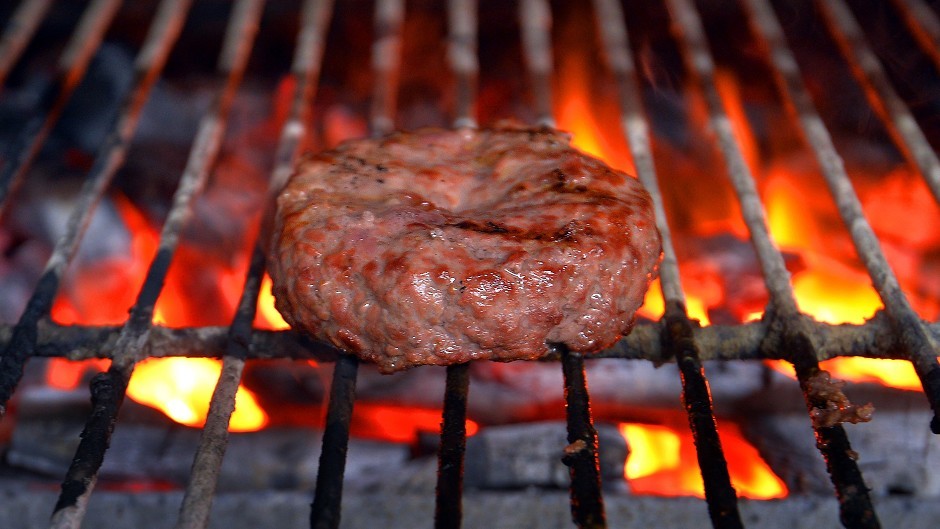
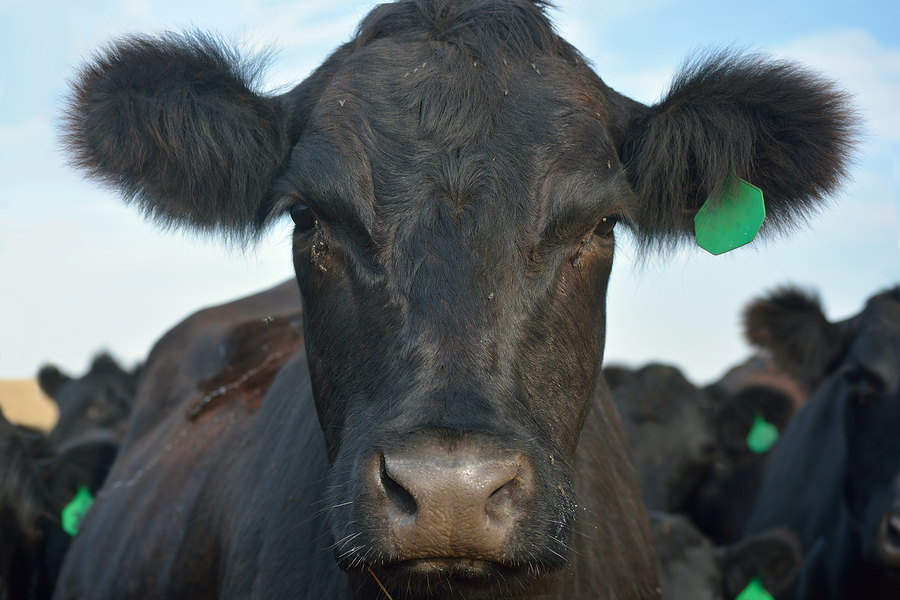
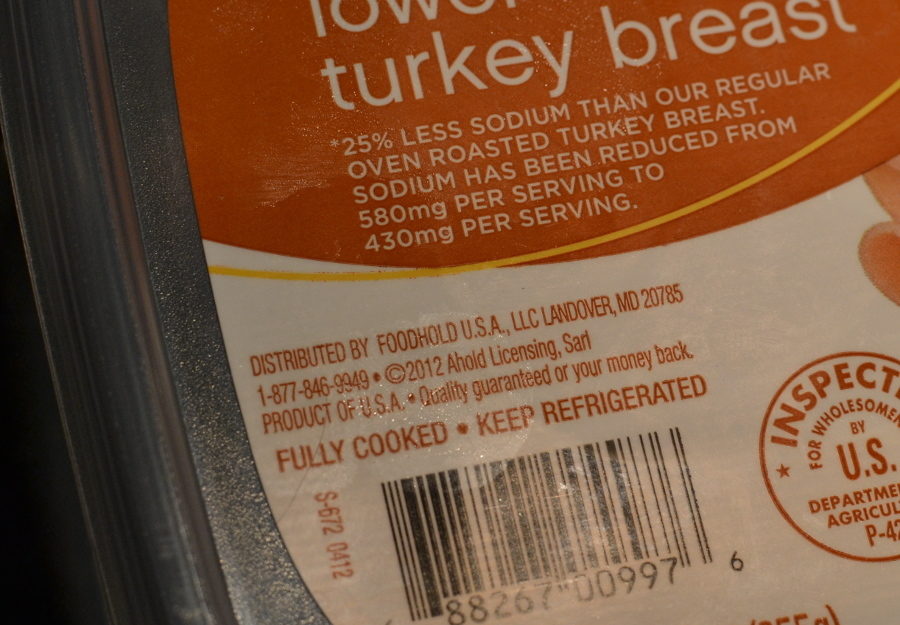
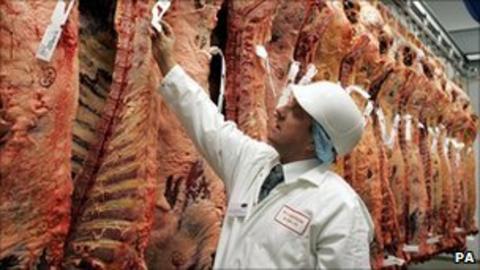
Post a Comment for "39 country of origin meat labels"